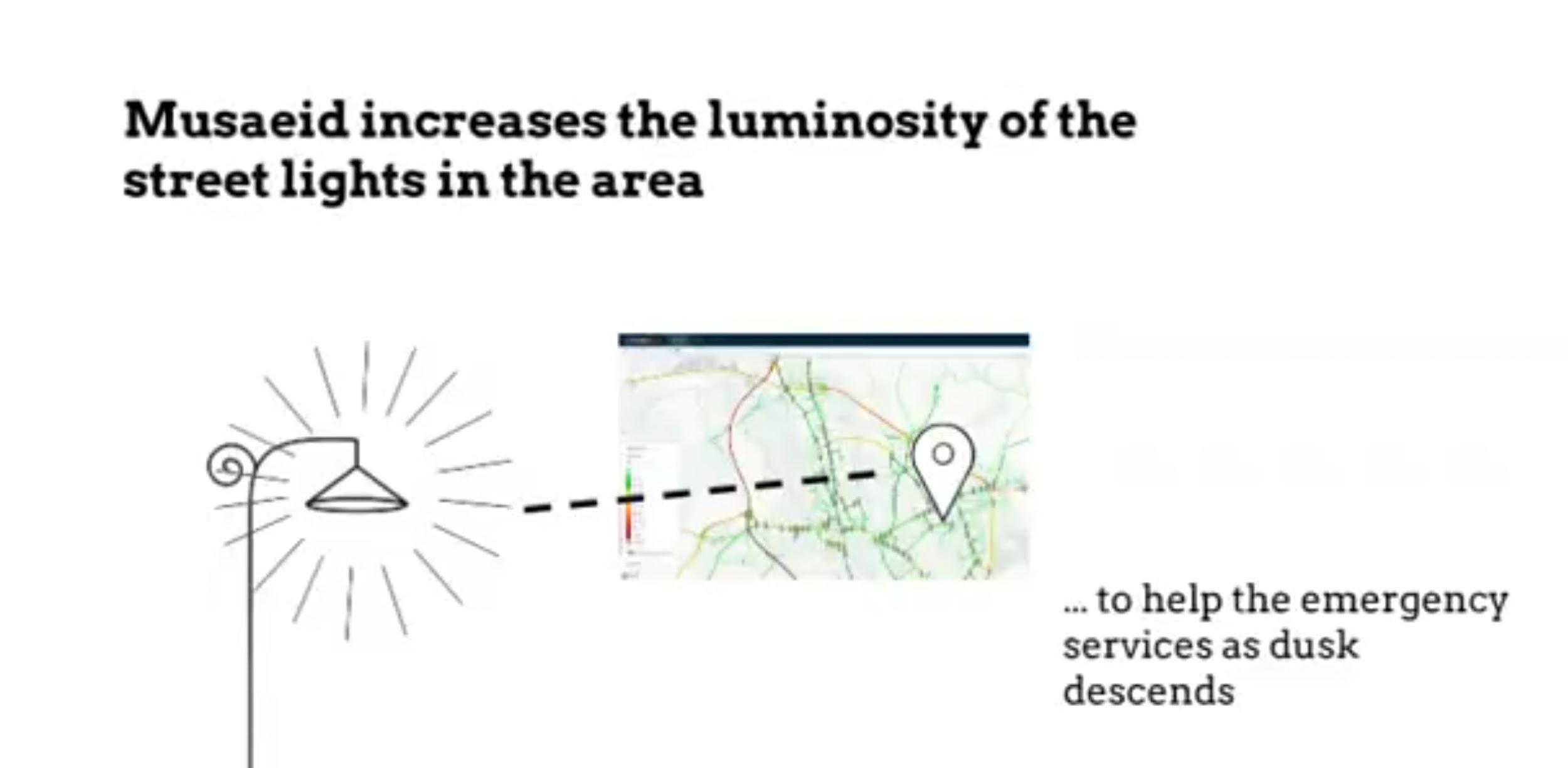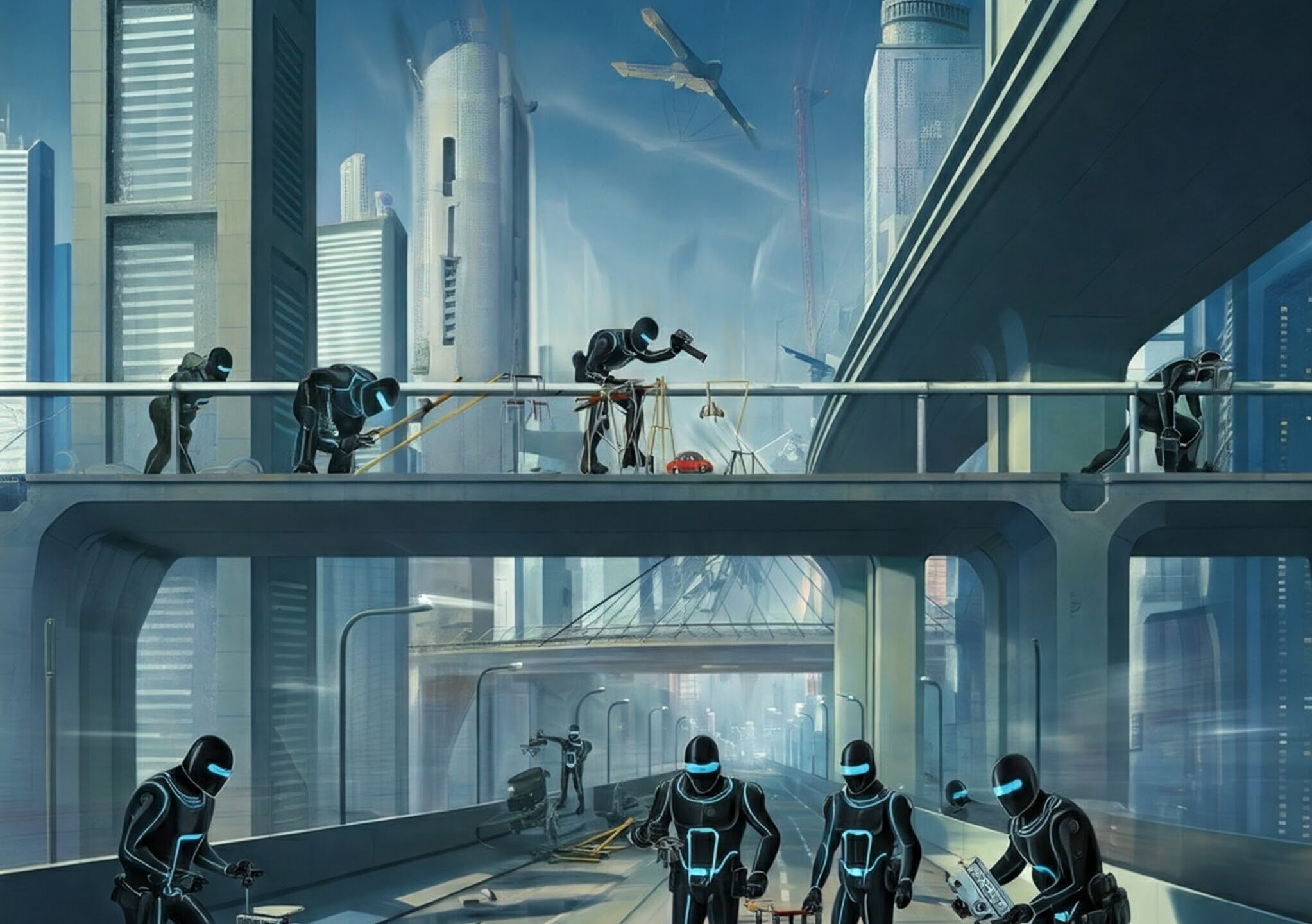The Agentic city: 15 Use cases to enhance sustainable city development and help grow local peopl
Now we’ve heard of smart cities, Internet of everything cities, the cognitive city of course, and even the web 3 City, so what is this new agentic thing? I’ll get to that in a minute but firstly let me be clear that I have been pushing the Smart City wheel barrow for nearly 10 years now so I won’t be making any hypocritical comments to the negative. To the contrary, all evolutions of City and urban fabric that are driven by modern processes and Technology are all good by me.
Not just because they’re my comfortable space, but because there is strong rush now for the modernization of the urban space and the benefits that this brings directly to citizens and operators of said cities.
To understand the evolution of the impact of technology and modernized processes on cities, we can think of an archaeological cross-section of an ancient City underground, where you see layer by layer the past history of the urban scape, with each renewal being built on top of the last one. Thus it is with the agentic, web 3, cognitive cities which are all terms to describe the next level of evolution of urban technology. None of these have appeared by themselves uniquely, they are built on top of Foundations laid by technology deployments over decades which include solutions that are very relevant today such as Internet of Things sensor retworks, computer vision and blockchain. Yes I said blockchain is an old technology, ask yourself what would most non technical managers say about something that has been around for fifteen years? It has also gone through the same evolution as all technologies, from Crypto currency to distributed ledger technologies to web three.
The mad rush to constantly repackage things reminds me of car companies who will change the shape of the rear lights and declare a whole new model year. As with cars, just like with technology, whole new bits to the solution come along that enhances the whole, electric drivetrains being a topical example. For the city, the latest whole new bit is the way that stand alone algorithms have been refined to the point of being a whole new element called AI. And this new paradigm adds to our city technology vehicle handsomely supporting the existing robust Technologies. So the agentic part is really about encapsulating all these Technologies, old and new, to manage citizens needs. By old I don’t mean really old I mean the robust evolutions of long evolving Technologies. And another core element of the agentic philosophy is to first of all look at serving citizens and what they need and then figure all the technologies that can support these needs, using autonomous agents to manage them and support the people working in infrastructure maintenance, municipal services, planning departments and so on.

When I was at AlUla, I came up with the concept of Musaied, Arabic for helpfulness (or at times lack of it) , a whole city assistant who empowered the work of city managers by watching inputs and activity of the smart city system digital twin and alerting managers to actions that need to be taken. We designed over eighty use cases where the city assistant could act, ranging from following the evolution of fire response, to signaling planning violators, to identifying needed service enhancements. The agentic evolution of this is to construct (digitally) individual agents that are expert in a given function or field and que them much more autonomy.
So what are the concrete uses of agents that help us manage our… well… concrete cities…concretely? When the topic of Al or Agents is mentioned, many people will naturally think of customer care bot type applications. Just like you may have thought of Bitcoin when I mentioned blockchain earlier. A legacy reputation is hard to shake. However, the big idea with agents is to use their masters of language to do anything. As I write this I am building an agent to manage logistics. Sure it starts with Communication, but then goes on to autonomously manage logistics systems, aiding human managers in the process by removing busy work repetitive tests and escalating important stuff.
So here are some use cases for AI agents in the management and sustainable development of cities, which you will notice have been talked about a great deal in previous iteration of intelligent, smart, etc. cities, so we are building on the previous layers. Now here I of course used the enormous summarisation skills of Al to be succinct. In this case it’s ‘Agent’ Gemini from Google. And by the way, if summarising was the only skill of Al, it would still be enough to warrant the current hoo ha around it.
Here then are ten use cases for the management and development of sustainable cities:
1. Intelligent Traffic Management:
– AI agents can analyze real-time traffic data from various sources (cameras, sensors, GPS devices) to optimize traffic flow, reduce congestion, and minimize travel times. This can involve dynamically adjusting traffic signals, recommending alternative routes, and predicting potential traffic bottlenecks.
2. Smart Parking Management:
– AI agents can help drivers find available parking spaces in real-time, reducing the time spent searching for parking and minimizing traffic congestion caused by circling for parking spots. They can also optimize parking pricing based on demand and availability.
3. Enhanced Public Transportation:
– AI agents can optimize public transportation schedules and routes based on real-time passenger demand and traffic conditions. They can also provide personalized travel recommendations to commuters, improving the overall public transportation experience.
4. Smart Waste Management:
– AI agents can optimize waste collection routes and schedules based on fill levels of garbage bins and real-time traffic conditions. This can reduce fuel consumption, minimize waste overflow, and improve the efficiency of waste management operations.
5. Energy Management and Smart Grids:
– AI agents can analyze energy consumption patterns and optimize energy distribution across the city. They can also predict energy demand and adjust energy production accordingly, promoting the use of renewable energy sources and reducing reliance on fossil fuels.
6. Environmental Monitoring and Sustainability:
– AI agents can monitor air quality, water quality, and noise pollution levels in real-time. They can identify pollution sources, predict potential environmental hazards, and recommend measures to mitigate environmental risks.
7. Public Safety and Security:
– AI agents can analyze data from surveillance cameras and other sensors to detect suspicious activities, predict potential crime hotspots, and enhance public safety. They can also assist law enforcement agencies in responding to emergencies and preventing crime.
8. Smart Governance and Citizen Services:
– AI agents can provide citizens with personalized information and assistance regarding city services, such as permit applications, tax payments, and public events. They can also analyze citizen feedback and complaints to identify areas for improvement in city services.
9. Urban Planning and Infrastructure Development:
– AI agents can analyze urban data to identify areas for growth and development, optimize land use, and plan for future infrastructure needs. They can also simulate the impact of urban development projects on traffic flow, environmental conditions, and public services.
10. Disaster Response and Resilience:
– AI agents can assist in disaster response by analyzing real-time data from various sources (weather forecasts, social media feeds, sensor networks) to predict the impact of natural disasters, identify vulnerable areas, and coordinate emergency response efforts.
These are just a few examples of how AI agents can be used to improve the management and sustainable development of cities. As AI technology continues to evolve, we can expect to see even more innovative applications of AI agents in the urban environment.
Clearly a great deal of utility there, and we just started. Now enough of the Al overlord summary stuff and lets consider another angle.
The premise of my wordy meandering discussion on this subject is twofold, yes we’ve introduced the development and operator of a city that Al Agents can support. But I am also increasingly interested in the impact on people and how can we use these technologies to help the growth of individuals, especially in cities with young and growing, where skills are hard to find locally or where budgets are under ever increasing pressure. There could even be a case for helping local government to insource skills from distributed workers.
Now let’s get back to agent summary, again with Google Gemini, and discover five use cases that will help develop local people with to help of Al Agents:
1. Automated Report Generation and Analysis:
– Use Case: Municipal employees often spend significant time compiling data and creating reports for various purposes (e.g., budget reports, performance reports, grant proposals). AI agents can automate these tasks by extracting data from different sources, generating reports in desired formats, and even analyzing the data to identify trends and insights.
– Benefits: This frees up employees’ time for more strategic tasks, reduces the risk of errors in manual reporting, and provides data-driven insights for better decision-making.
2. Personalized Training and Skill Development:
– Use Case: AI agents can assess employees’ skills and knowledge gaps, recommend relevant training resources (e.g., online courses, workshops, mentorship programs), and even provide personalized learning pathways for career advancement.
– Benefits: This empowers employees to take ownership of their professional development, acquire new skills relevant to their roles, and stay competitive in the evolving job market.
3. Intelligent Task Management and Prioritization:
– Use Case: AI agents can analyze employees’ tasks, deadlines, and priorities to create optimized work schedules, suggest efficient workflows, and even automate routine tasks.
– Benefits: This helps employees manage their time effectively, reduce stress, and focus on high-value tasks that contribute to their career goals.
4. Enhanced Collaboration and Knowledge Sharing:
– Use Case: AI agents can facilitate knowledge sharing within municipalities and local businesses by connecting employees with relevant expertise, recommending relevant documents and resources, and even facilitating virtual collaboration platforms.
– Benefits: This breaks down information silos, promotes cross-functional collaboration, and accelerates knowledge transfer, leading to improved productivity and innovation.
5. Streamlined Permitting and Licensing:
– Use Case: AI agents can guide citizens and businesses through the often complex process of applying for permits and licenses (e.g., building permits, business licenses). They can answer questions, provide required forms, check for completeness, and even automatically route applications to the appropriate departments for review.
– Benefits: This reduces processing times, minimizes errors and delays, improves citizen satisfaction, and allows municipal employees to focus on more complex tasks.
By using AI agents in these ways, municipalities can improve efficiency, enhance citizen services, and empower employees to be more productive and effective in their roles.
So in summary, a human summary this time, AI agents can benefit cities and help expand the working lives of local people. While municipal organisation benefit through time saving and efficiency of services, more personalised services and the ability to switch more work to local people, the said local municipal workers get to access more and better information (especially how its summarised) and do more efficient, less repetitive look. Additionally the local economy can gain by more skilled jobs being filled by local people and carried out locally.
As business commentators are prone to say, “it’s a journey”. In this case, it’s a journey that cities have been on for a couple of decades but that can really accelerate in terms of both services and job opportunities for local people.
